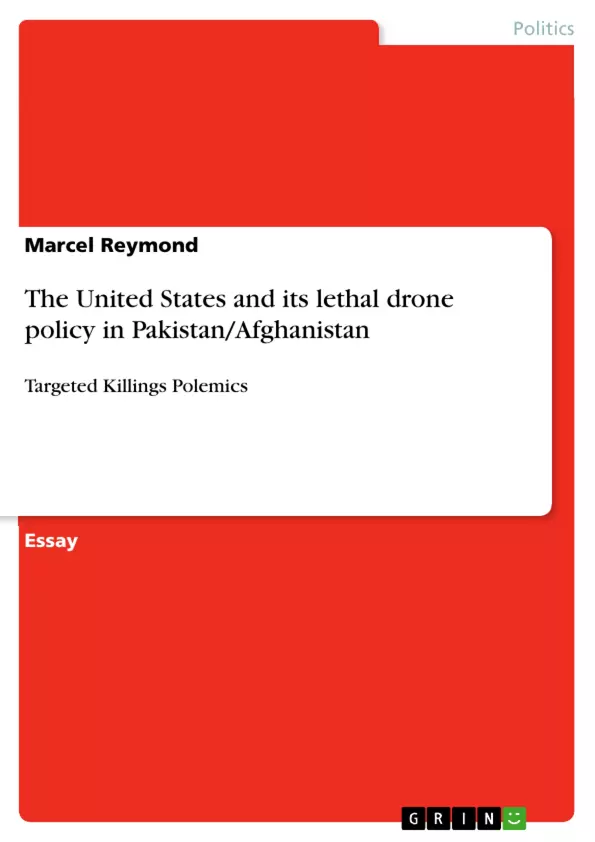The United States of America’s current lethal drone policy is still shrouded in mystery and complexity: little official information is accessible to the public. This document, therefore, could only raise a certain number of issues. If there were a document detailing the said policy, it could not be found. This paper has had to rely on other various sources to expose the policy elements. It focuses on the war theater in Pakistan/Afghanistan and the drone policy’s lethal elements.
Firstly, the paper will delve into the development of the U.S. drone program and the controversial use of an automatized lethal process. Secondly, it will consider elements from the political sphere that shaped the current policy. Thirdly, it will analyze the implication of public opinion in Pakistan and the U.S. Fourthly, the paper will highlight a few of the legal aspects that influenced the drone policy before drawing a conclusion.
The most discussed element influencing the drone policy of the U.S has been freely interpreted as the information relating to the matter remains scarce and mostly unofficial. What looked, at first, like a classic security versus democracy dilemma added to a member of the U.S. intelligence community seemingly out of control, a Department of Defense (DoD) with hardly any oversight, gave rise, surprisingly, to a quite controlled but executive branch driven process. One cannot ascertain however whether the safeguards in place, were operative and respected whilst the lethal drone program was progressing.
Inhaltsverzeichnis (Table of Contents)
- Introduction
- Drone History
- American Political Sphere
- Public Opinion in Pakistan
- Public Opinion in the U.S.
- Legal Aspects
- Conclusion
Zielsetzung und Themenschwerpunkte (Objectives and Key Themes)
This paper aims to explore the complexities of the United States' lethal drone policy, focusing specifically on its implementation in Pakistan and Afghanistan. It examines the evolution of the drone program, analyzes the political factors that have shaped the policy, and investigates public opinion in both Pakistan and the United States. Additionally, the paper delves into the legal aspects of the drone policy.
- The development and implementation of the U.S. drone program
- The political influences shaping the drone policy
- Public opinion in Pakistan and the U.S. concerning the drone policy
- Legal considerations surrounding the drone policy
- The implications of automated warfare and the ethical challenges it presents
Zusammenfassung der Kapitel (Chapter Summaries)
The Introduction provides a concise overview of the paper's scope, highlighting the lack of readily available information on the U.S. drone policy and the challenges encountered in accessing relevant data. It outlines the paper's key areas of investigation: the history of the drone program, the political influences, public opinion, and legal aspects.
The chapter titled "Drone History" traces the evolution of drones from early experiments in unmanned aerial vehicles during World War I to the modern-day use of armed drones. It examines the motivations behind the development and use of drones, highlighting the emphasis on reducing risks to military personnel and the technological advancements that have made drones increasingly powerful and sophisticated.
The chapter titled "American Political Sphere" analyzes the political factors that have influenced the U.S. drone policy. It explores the role of covert operations, political oversight, and delegation of powers in shaping the policy, acknowledging the complexity of the system and the difficulty in providing a comprehensive description of all its components.
Schlüsselwörter (Keywords)
The central themes and concepts explored in this paper include U.S. foreign policy, drone warfare, targeted killings, unmanned aerial vehicles (UAV), automated warfare, ethical considerations, public opinion, legal frameworks, and political influences.
- Quote paper
- Marcel Reymond (Author), 2012, The United States and its lethal drone policy in Pakistan/Afghanistan, Munich, GRIN Verlag, https://www.grin.com/document/203210



